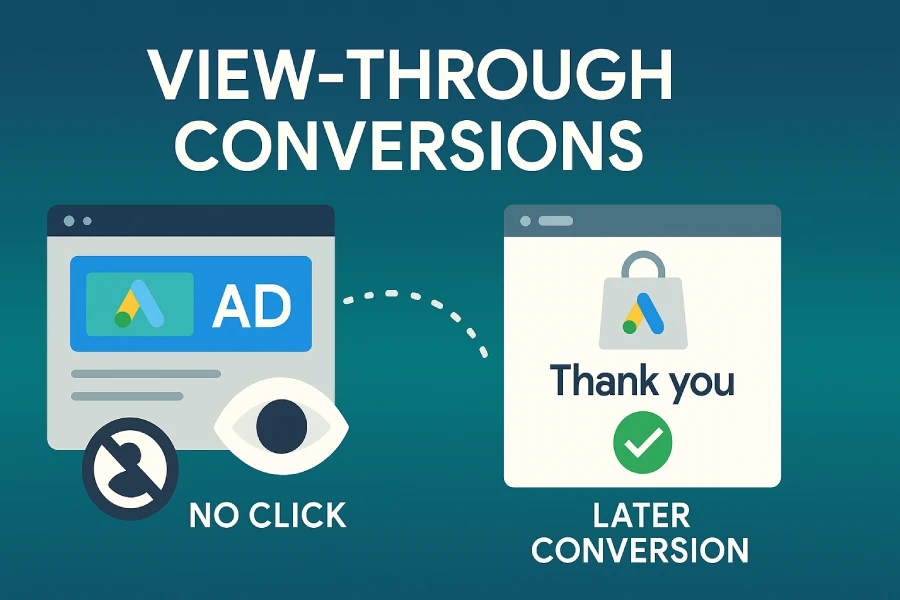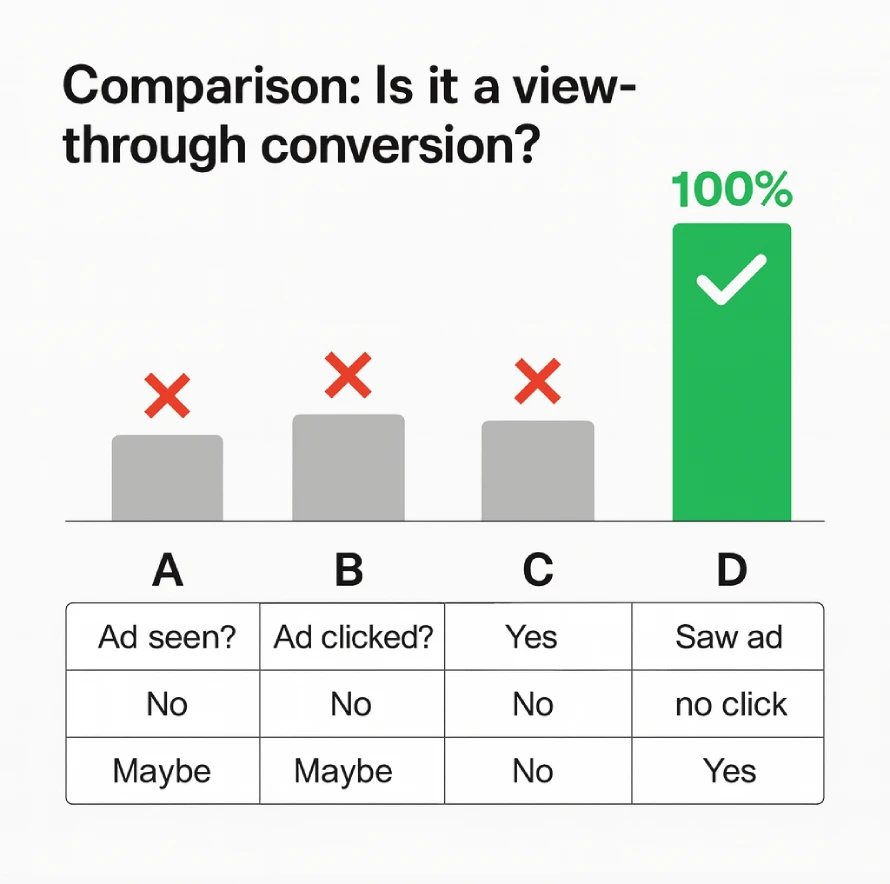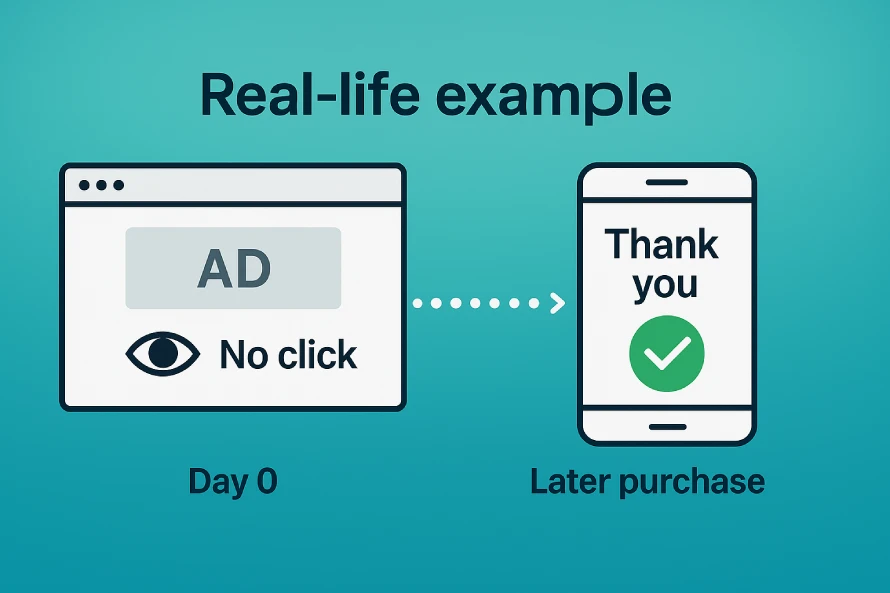The correct answer is “An action in which a customer sees but does not interact with your ad, and then later completes a conversion on your site.” Why is this right, and why are the others wrong? From Miteart I will explore the full guide on how to pick the right answer. So no delay. Let’s get started.

Table of Contents
Question
A marketing manager is viewing the campaign report in Google Ads after setting up conversion tracking. Two ads show more than 100 view through conversions. Which action counts as a view through conversion?
A. An action that is done in store only and does not require the customer to have interacted with your ad.
B. An action with only conversions from browsers that do not allow cross site cookies.
C. An action where a customer sees and interacts with your ad, but then does not complete a conversion on your site.
D. An action where a customer sees but does not interact with your ad, and then later completes a conversion on your site.
The correct answer
D. An action where a customer sees but does not interact with your ad, and then later completes a conversion on your site.
Why the correct answer is right
The correct answer is D, but why? Let’s begin.
A view through conversion means the person saw your ad, did not click, and later converted on your site within the set time window.
That is exactly what option D says.
- The ad must be viewed first.
- There is no ad click. If a click happens, it becomes a click through conversion.
- A real conversion happens later on your site.
- It is counted only inside the view through window you set.
- Credit goes to the last viewable impression.
- Common for Display and Video where many people see ads but few click.
So D is the only choice that matches the true definition.
Why the other options are wrong
A. In store only, no ad exposure needed
Store only actions without ad exposure are not view through conversions. View through requires that the user saw your ad.
B. Only from browsers that block cross site cookies
Limits on cookies and consent can change how many conversions are observed or modeled, but that is not the definition of a view through conversion. Consent Mode may model some conversions, yet view through still means saw the ad, did not interact, then converted.
C. Saw and interacted but did not convert
If the user interacted and later converted, that would be a click through conversion. If they interacted and did not convert, there is no conversion. View through requires no interaction followed by a conversion within the window.
Comparison table
| Option | Ad was seen | Ad was clicked | Later conversion | Is it a view through conversion |
|---|---|---|---|---|
| A. In store only, no ad exposure | No | No | Maybe | No |
| B. Only from cookie blocked browsers | Not required | Not required | Maybe | No, cookie state is not the definition |
| C. Saw and interacted, no conversion | Yes | Yes | No | No |
| D. Saw, no interaction, later conversion | Yes | No | Yes | Yes |

Real life example
Maya runs a Display campaign to promote a spring sale. A shopper sees her banner on a news site but does not click. Two days later the shopper searches for the brand, visits the site, and buys. Google Ads records a view through conversion for the Display ad because the shopper saw the ad and later converted within the set window.

Relevant resource links
- View through conversion window and definition. (Google Help)
- About view through conversions and how they are counted in reports. (Google Help)
- About Consent Mode and modeled conversions when cookies are limited. (Google Help)
Conclusion
View through conversions show the value of ads that people see but do not click. If those viewers later buy or sign up within your window, Google Ads gives credit to the last viewable impression. Use this metric to judge Display and Video impact beyond clicks and to guide your budgets and bids.
FAQs
What channels use view through conversions most?
Display and Video. They help you value ads that build awareness without clicks.
Who gets credit for a view through conversion?
For Display, the last viewable impression gets credit, within your set window.
What is the view through window?
The time after an impression when a view through conversion can be counted. You can set this window in your conversion action.
Do cookie limits change the definition?
No. They affect measurement. Consent Mode can model some missing conversions, but a view through conversion still means saw the ad, did not interact, then converted.
